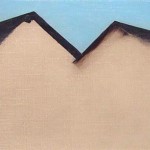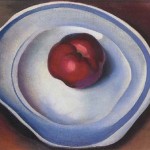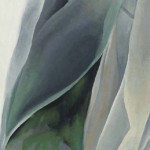Biography
Georgia O’Keeffe (1887-1986)
Born and raised in Sun Prairie, Wisconsin, Georgia O’Keeffe became one of the first American modernists, the first woman to gain recognition for that style, and a signature painter of Southwest landscape and structures. She went to the Art Institute of Chicago in 1905-06 and studied with John Vanderpoel.
She then attended the Art Students League in New York under William Merritt Chase, Kenyon Cox, and F. Luis Mora. At this time in New York, she first became aware of modernist art. Although O’Keeffe was an award-winning artist at the League, she quit painting from 1908 to 1912 to work as a commercial artist.
In 1912, she attended classes at the University of Virginia and became aware of the ideas of Arthur Wesley Dow, well known art educator. She then went to Amarillo, Texas as the Supervisor of Public School Art and in 1914, returned to New York City and studied with Dow. She adopted his ideas that painting was a “filling of space in a beautiful way” (Baigell “Dictionary”), and from that time, did abstract drawings and paintings, many of them spare in color and form.
Her talents were “discovered” by photographer-gallery owner Alfred Stieglitz, who saw that she got established with the New York avant garde. However, she spent two more years, 1916 to 1918, in Texas, heading the art department at West Texas State Normal School in Canyon. The landscape there inspired many colorful canyon and plains landscapes. Returning to New York, she married Stieglitz and frequently accompanied him to Lake George in upstate New York. In 1924, she began to paint the botanicals, which became a signature part of her work. In the 1920s, she also did a series of New York City skyscraper scenes.
In 1929, she first went to the Southwest and visited each summer until her husband died in 1946, when she became a permanent resident. She settled in Abiquiu and produced the landscape and architectural paintings for which she is best known. Her style is austere as was her lifestyle; she dressed simply and followed a regular routine that nourished her creativity. In her later years, she was assisted by sculptor Juan Hamilton, who encouraged her in sculpture and managed her business affairs and administered her estate after she died.

 Untitled (Barn Rooftops)
Untitled (Barn Rooftops)
 Red Apple on a Blue Plate
Red Apple on a Blue Plate
 Abstraction
Abstraction